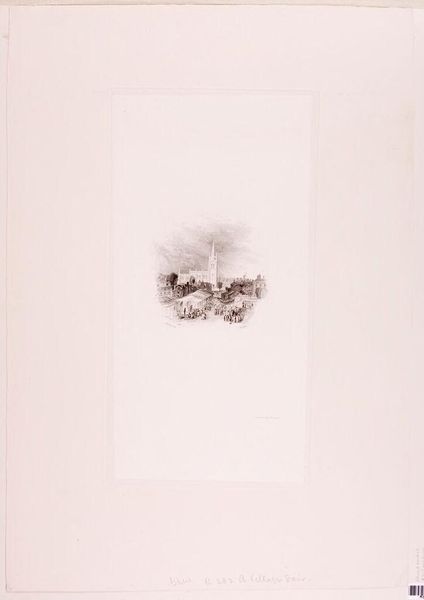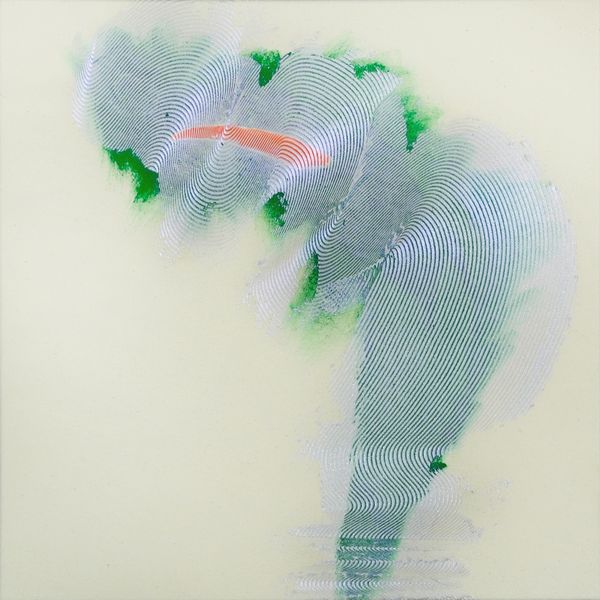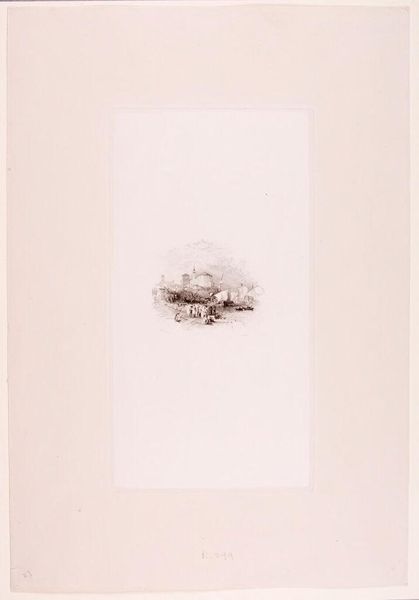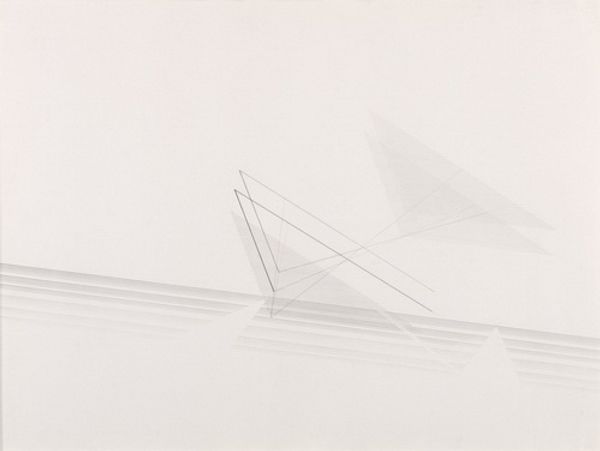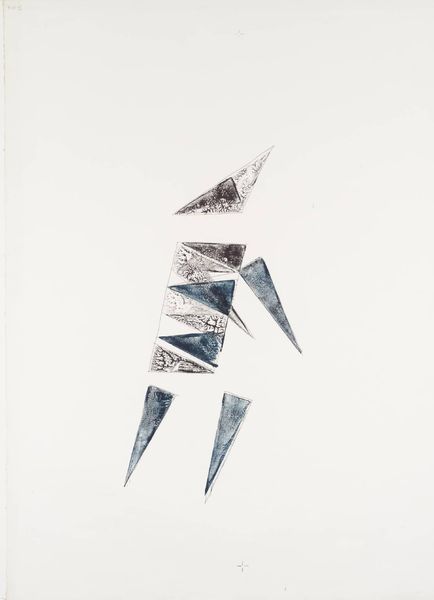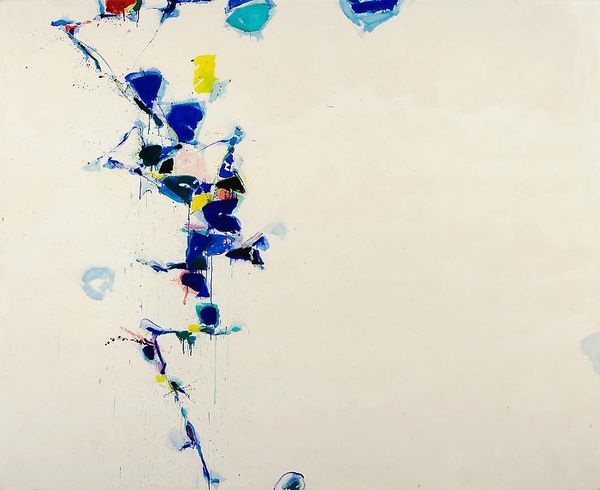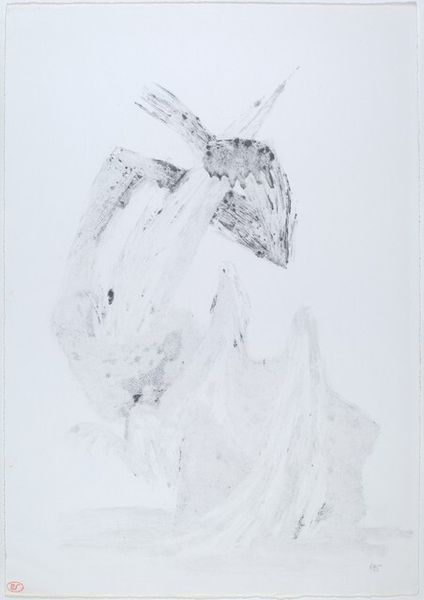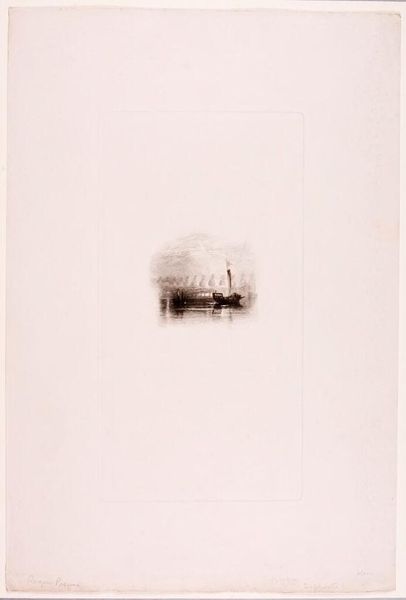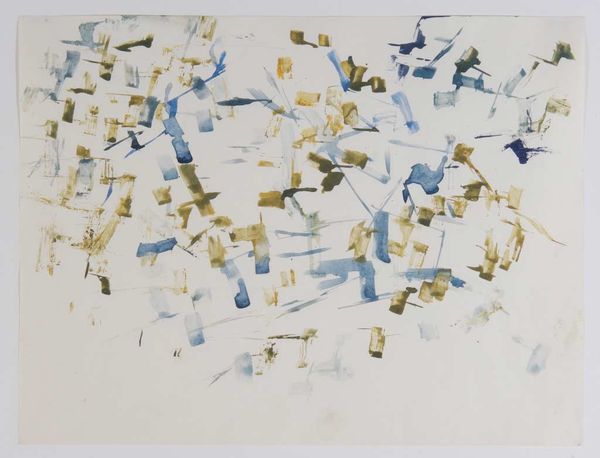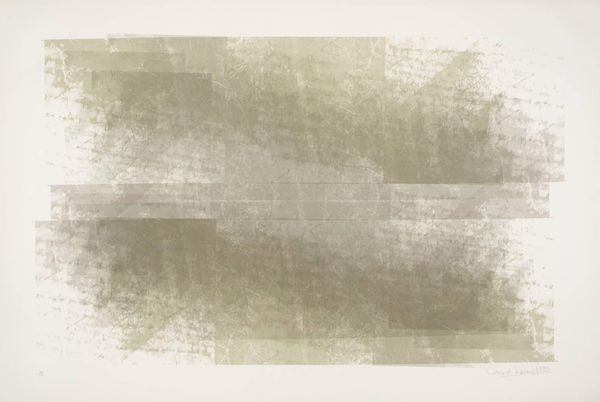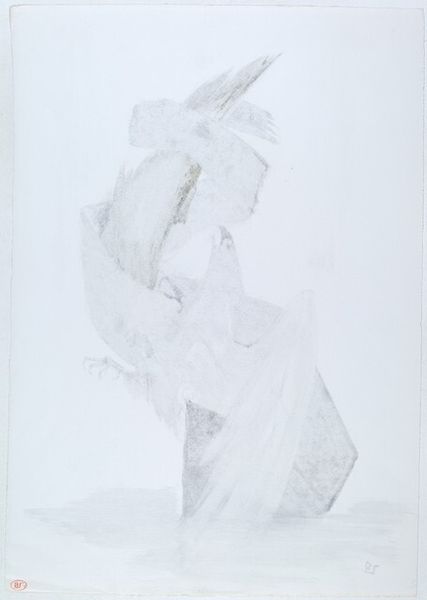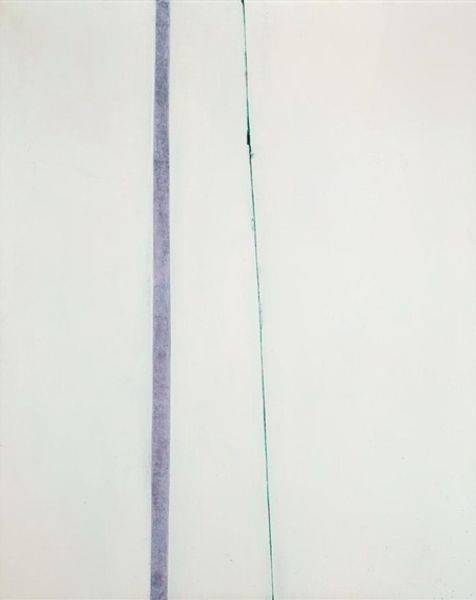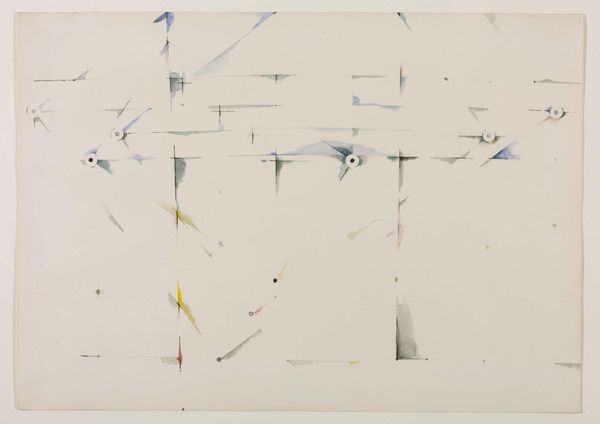
drawing
#
drawing
#
geometric
#
abstraction
#
modernism
Dimensions: overall: 77.2 x 111.8 cm (30 3/8 x 44 in.)
Copyright: National Gallery of Art: CC0 1.0
Editor: This is Alan Saret’s “Great Coldra-Van Eatering,” created in 1985. It’s a drawing, and it feels almost like a storm brewing on the page, very energetic and kind of unsettling in its asymmetry. How do you interpret this work? Curator: I see this piece as an expression of Saret’s interest in pushing boundaries and rejecting conventional artistic constraints, something very visible in postmodernist practices of the time. Look at the chaotic linework; what kind of commentary do you think it makes on power? Editor: That’s an interesting way to think about it. I guess I see it more as just abstract mark-making, like a release of pure energy rather than anything deliberately political. Curator: But isn't the choice of such frenetic energy itself a political act? Post-minimalism was a rejection of formal rigidity. Artists of this era wanted to confront social and political issues in their art by embracing non-traditional forms. Can we see echoes of the prevailing anxieties of the Cold War in this "storm brewing"? How does Saret push us to consider our relationship with disorder, chaos, the limits of control? Editor: I didn’t consider the Cold War context. It makes sense now how a reaction to order would surface. I never would’ve pieced that together by myself! Curator: It’s about connecting those dots, and considering the many social influences reflected, even unintentionally, in the creative process. Perhaps the artwork expresses social unrest from the artist's position of marginalization. Editor: I agree. There are endless questions here, and Saret makes a stand by making us ask these questions of his work. Curator: Exactly. And through abstraction, Saret gives those affected a voice, so he challenges us to reflect and rethink the assumptions within cultural institutions. Editor: This has certainly reframed my perception. Now I'm wondering what else is present in the artwork beneath its aesthetics. Curator: Precisely, and remember that art serves to reflect a mirror on us, making us see ourselves within these greater paradigms and reflect on what affects who we are.
Comments
No comments
Be the first to comment and join the conversation on the ultimate creative platform.
